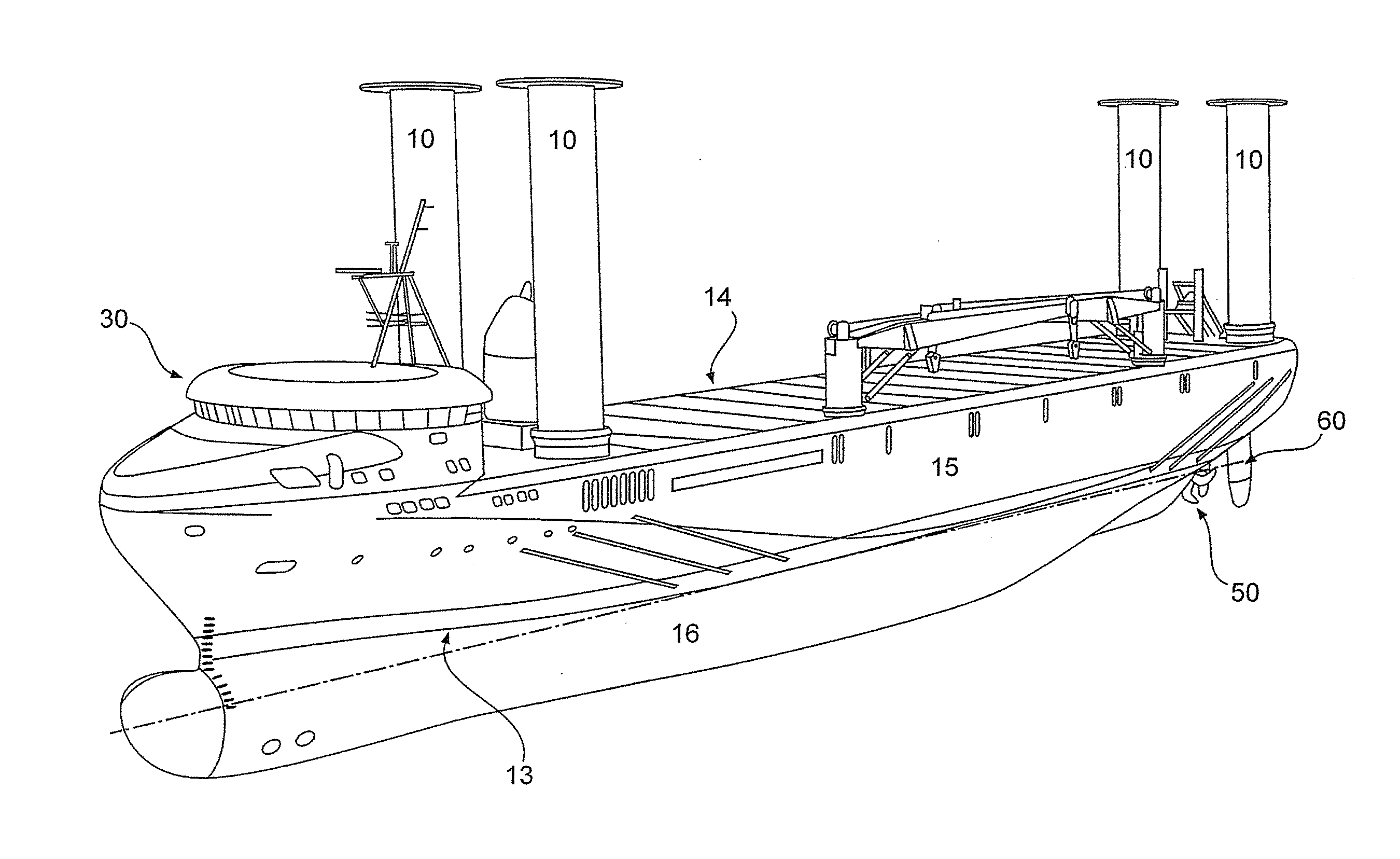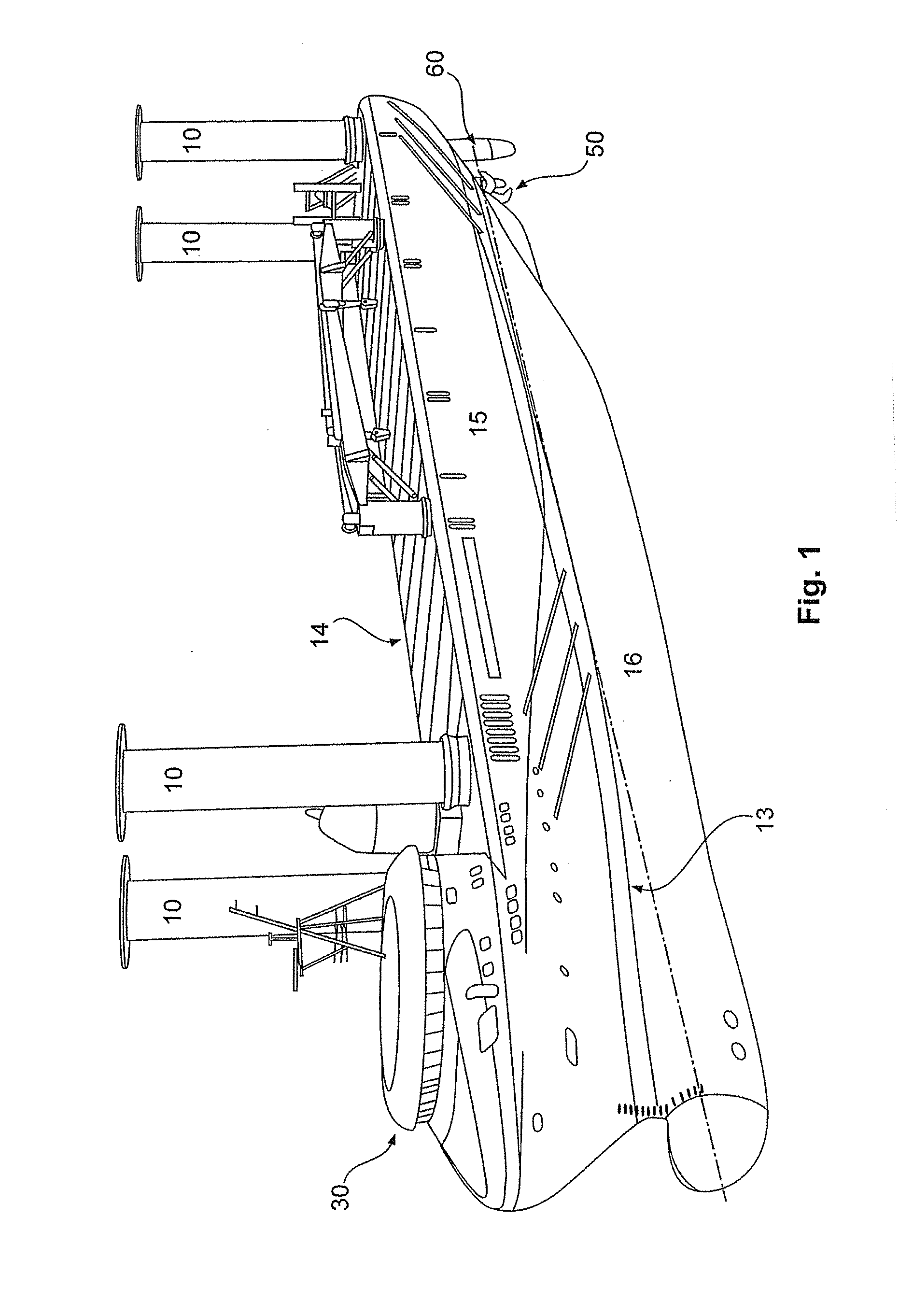Method for operating a ship, in particular a cargo ship, with at least one magnus rotor
a technology of magnus rotor and cargo ship, which is applied in the direction of special-purpose vessels, marine propulsion, vessel construction, etc., can solve the problems of not being able to produce such a rearward movement physically at all, and the lateral deflection cannot be compensated by the rudder assembly
- Summary
- Abstract
- Description
- Claims
- Application Information
AI Technical Summary
Benefits of technology
Problems solved by technology
Method used
Image
Examples
Embodiment Construction
[0030]FIG. 1 shows a perspective view of a ship with four Magnus rotors 10. In this case the ship has a hull comprising an underwater region 16 and an above-water region 15. The ship further has four Magnus rotors 10 which are arranged at the four corners of the hull and which are preferably cylindrical. In this case the four Magnus rotors 10 represent wind-operated drives for the ship according to the invention. The ship has a bridge 30 arranged in the forecastle. The ship has underwater a screw 50 or a propeller 50 as well as a rudder assembly 60 or a rudder 60. For improved maneuverability the ship can also have transverse thruster rudders, wherein preferably one is provided at the stern and one to two transverse thruster rudders are provided at the bow (not shown). Preferably those transverse thruster rudders are driven electrically. In this case the bridge 30 and all superstructures above the weather deck 14 are of an aerodynamic configuration to reduce wind resistance. That is...
PUM
 Login to View More
Login to View More Abstract
Description
Claims
Application Information
 Login to View More
Login to View More - R&D
- Intellectual Property
- Life Sciences
- Materials
- Tech Scout
- Unparalleled Data Quality
- Higher Quality Content
- 60% Fewer Hallucinations
Browse by: Latest US Patents, China's latest patents, Technical Efficacy Thesaurus, Application Domain, Technology Topic, Popular Technical Reports.
© 2025 PatSnap. All rights reserved.Legal|Privacy policy|Modern Slavery Act Transparency Statement|Sitemap|About US| Contact US: help@patsnap.com



